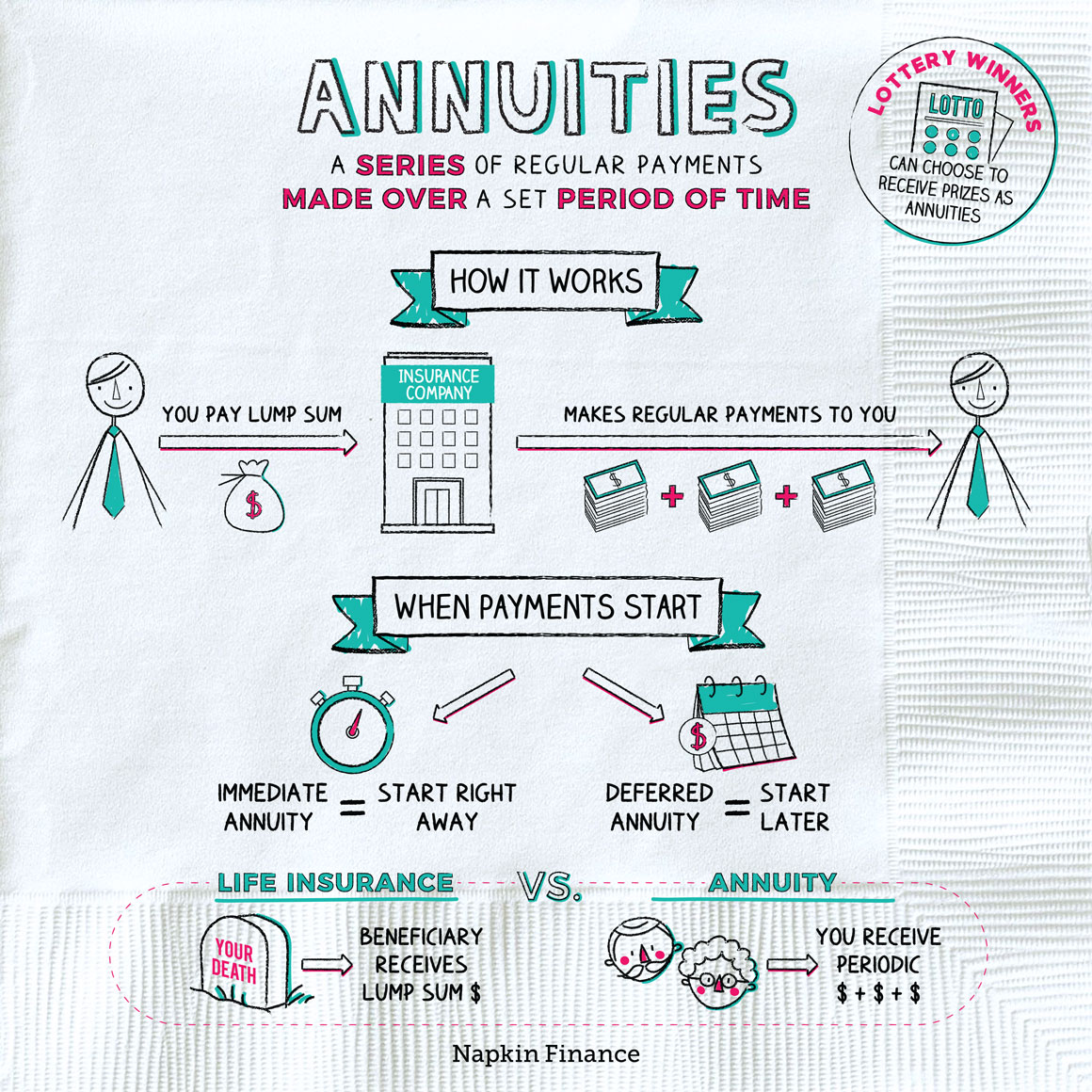All Categories
Featured
Table of Contents

Understanding the different fatality advantage alternatives within your acquired annuity is very important. Meticulously examine the agreement information or consult with a financial expert to identify the certain terms and the most effective way to wage your inheritance. When you inherit an annuity, you have a number of alternatives for getting the money.
Sometimes, you may be able to roll the annuity into an unique kind of private retirement account (INDIVIDUAL RETIREMENT ACCOUNT). You can select to get the entire staying equilibrium of the annuity in a solitary repayment. This choice supplies instant accessibility to the funds however includes major tax obligation effects.

If the inherited annuity is a qualified annuity (that is, it's held within a tax-advantaged pension), you may be able to roll it over right into a brand-new retirement account. You don't require to pay taxes on the surrendered amount. Beneficiaries can roll funds right into an inherited individual retirement account, an one-of-a-kind account particularly made to hold assets acquired from a retirement.
Lifetime Annuities death benefit tax
Other sorts of recipients normally should withdraw all the funds within 10 years of the owner's death. While you can't make added payments to the account, an acquired IRA provides a valuable advantage: Tax-deferred growth. Revenues within the inherited individual retirement account accumulate tax-free up until you begin taking withdrawals. When you do take withdrawals, you'll report annuity earnings in the exact same method the plan individual would certainly have reported it, according to the IRS.
This choice offers a steady stream of earnings, which can be useful for lasting economic planning. Typically, you have to start taking circulations no more than one year after the owner's fatality.

As a recipient, you won't be subject to the 10 percent IRS early withdrawal penalty if you're under age 59. Trying to calculate taxes on an inherited annuity can really feel complex, but the core concept revolves around whether the added funds were formerly taxed.: These annuities are funded with after-tax dollars, so the beneficiary generally doesn't owe tax obligations on the original payments, but any kind of earnings accumulated within the account that are dispersed undergo regular income tax.
Inherited Long-term Annuities taxation rules
There are exemptions for partners that inherit certified annuities. They can normally roll the funds right into their own individual retirement account and delay taxes on future withdrawals. In any case, at the end of the year the annuity firm will certainly submit a Kind 1099-R that demonstrates how much, if any kind of, of that tax year's distribution is taxed.
These tax obligations target the deceased's complete estate, not simply the annuity. These tax obligations usually just influence extremely large estates, so for many heirs, the focus should be on the earnings tax obligation ramifications of the annuity. Acquiring an annuity can be a facility but possibly monetarily advantageous experience. Understanding the terms of the contract, your payout options and any tax obligation ramifications is essential to making educated decisions.
Is there tax on inherited Flexible Premium Annuities
Tax Treatment Upon Fatality The tax therapy of an annuity's death and survivor advantages is can be fairly made complex. Upon a contractholder's (or annuitant's) death, the annuity may be subject to both earnings tax and estate taxes. There are various tax treatments depending on that the beneficiary is, whether the proprietor annuitized the account, the payout technique picked by the beneficiary, etc.
Estate Tax The federal inheritance tax is a highly modern tax (there are several tax obligation brackets, each with a greater price) with prices as high as 55% for large estates. Upon fatality, the internal revenue service will certainly include all residential property over which the decedent had control at the time of fatality.
Any tax in excess of the unified credit is due and payable 9 months after the decedent's death. The unified credit scores will completely sanctuary reasonably moderate estates from this tax obligation.
This conversation will focus on the estate tax obligation treatment of annuities. As held true throughout the contractholder's lifetime, the IRS makes an important distinction in between annuities held by a decedent that are in the accumulation stage and those that have entered the annuity (or payout) phase. If the annuity is in the buildup phase, i.e., the decedent has actually not yet annuitized the contract; the complete survivor benefit assured by the agreement (consisting of any kind of improved death benefits) will be consisted of in the taxed estate.
Taxes on inherited Deferred Annuities payouts
Example 1: Dorothy possessed a fixed annuity contract released by ABC Annuity Company at the time of her death. When she annuitized the agreement twelve years ago, she picked a life annuity with 15-year period certain.

That worth will be consisted of in Dorothy's estate for tax purposes. Think instead, that Dorothy annuitized this agreement 18 years back. At the time of her death she had actually outlasted the 15-year duration specific. Upon her death, the settlements stop-- there is nothing to be paid to Ron, so there is nothing to consist of in her estate.
Two years ago he annuitized the account choosing a lifetime with cash refund payment alternative, calling his little girl Cindy as beneficiary. At the time of his fatality, there was $40,000 principal staying in the agreement. XYZ will pay Cindy the $40,000 and Ed's executor will certainly include that amount on Ed's estate tax return.
Because Geraldine and Miles were wed, the advantages payable to Geraldine represent residential property passing to a making it through spouse. Structured annuities. The estate will have the ability to make use of the unrestricted marriage reduction to prevent taxes of these annuity advantages (the worth of the advantages will certainly be provided on the estate tax obligation kind, along with a countering marital reduction)
Index-linked Annuities beneficiary tax rules
In this case, Miles' estate would include the worth of the remaining annuity settlements, yet there would certainly be no marriage reduction to offset that inclusion. The very same would use if this were Gerald and Miles, a same-sex pair. Please note that the annuity's remaining worth is identified at the time of death.
:max_bytes(150000):strip_icc()/do-beneficiaries-pay-taxes-life-insurance.asp-final-7e81561536514dbdb30500ba1918afb3.png)
Annuity agreements can be either "annuitant-driven" or "owner-driven". These terms refer to whose fatality will activate repayment of death advantages. if the contract pays fatality benefits upon the death of the annuitant, it is an annuitant-driven agreement. If the death benefit is payable upon the death of the contractholder, it is an owner-driven agreement.
There are situations in which one person possesses the contract, and the measuring life (the annuitant) is a person else. It would certainly behave to assume that a specific contract is either owner-driven or annuitant-driven, but it is not that basic. All annuity contracts provided considering that January 18, 1985 are owner-driven since no annuity contracts issued ever since will certainly be provided tax-deferred standing unless it consists of language that sets off a payout upon the contractholder's death.
Table of Contents
Latest Posts
Exploring the Basics of Retirement Options Key Insights on Tax Benefits Of Fixed Vs Variable Annuities Defining Fixed Vs Variable Annuity Pros And Cons Advantages and Disadvantages of Fixed Vs Variabl
Understanding Pros And Cons Of Fixed Annuity And Variable Annuity A Comprehensive Guide to Fixed Vs Variable Annuities Breaking Down the Basics of Investment Plans Benefits of Indexed Annuity Vs Fixed
Decoding How Investment Plans Work Everything You Need to Know About Financial Strategies Defining the Right Financial Strategy Pros and Cons of Fixed Indexed Annuity Vs Market-variable Annuity Why Ch
More
Latest Posts